Anatomy of a law report
Any law reports, whether of the full text or summary type, needs to contain certain fundamental pieces of information in order to justify its being cited in support of a proposition of law.
First of all, it must have a title, usually based on the names of the parties. It must identify the court giving judgment, and the date on which it was given.
Most fundamentally, it needs to contain a statement of the principle of law decided in the case. The statement should ideally be expressed as a rule or proposition which can be applied in subsequent cases even if the facts are not the same. It will usually be taken from the words actually used by the judge(s) but it may be condensed in some way and put into reported rather than quoted speech. The most highly evolved form of such a statement is to be found in the modern headnote of a full text law report as published by ICLR.
Finally, to reassure the reader of the reliability of the report, the reporter must be a qualified lawyer, and this must be evident either from the report itself or the publication in which it appears.
The above five elements (title, court, date, principle of law, reporter) constitute the bare minimum for a summary report. But most reports contain a number of other elements, most notably the full text of the judgment(s) in the case and the names of the judge(s).
What follows is a more detailed explanation of all the various elements of a modern full text law report, such as is published in The Law Reports, listed in the order in which they appear. The illustrations are based on the PDF of this full text law report which it may be helpful to download and view alongside.
1. Court
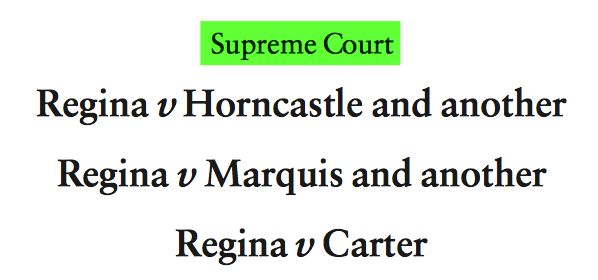
Usually the first thing an ICLR report will state is the court from which it is taken. This appears at the top of the first page, and is abbreviated in the running heads.
In some series, the name of the court can only be identified by reference to the volume or publication in which the case appears. For example, cases appearing in the Chancery series of the Law Reports are assumed to be in the Chancery Division of the High Court, unless they are identified as having been decided in the Court of Appeal or, on a reference from the High Court or the Court of Appeal, the Court of Justice of the European Union.
2. Title
The basic rule
Most case titles are expressed in the form of one party’s (the claimant’s) surname versus (Latin for “against”) another’s (the defendant’s). In civil cases, this appears as Smith v Jones but is conventionally pronounced as “Smith and Jones”.

Criminal cases are almost always prosecuted by the Crown, using the Latin for “queen” (Regina) or “king” (Rex). Most criminal cases therefore take the form of Regina, Reg or R v Brown. It is conventionally pronounced “Queen (or King) against Brown”.
Variations
Some criminal cases or appeals are maintained the name of the Director of Public Prosecutions, or DPP, instead of the Crown: eg Brown v DPP.
However references by the Attorney General to the Court of Appeal following an acquittal do not use the defendant’s name, just a reference number: Attorney General’s Reference (No 1 of 2011). Some civil case titles take other forms, eg In re Smith’s Estate (“in the matter of” Smith’s estate), In re A (A child) or In re Jones Co Ltd (in liquidation).
Judicial review claims (against public authorities alleging breaches of public law), though civil proceedings, are also brought in the name of the Crown, acting “on the application of” (or as it used to be, “ex parte”) the name of the applicant, thus taking the form of: R (Smith) v Secretary of State for Justice or, for older cases, R v Westminster City Council, Ex parte Jones.
Admiralty actions in rem (Latin for “thing” or “matter”) involving a ship are brought in the name of the ship: The Titanic. However, ordinary shipping claims involving litigating parties (claims “in personam”) should not use the name of the ship as a title, though they often do as a form of shorthand: Smith Shipping Coprn v Jones Insurers (The Mary Rose).
3. Date

The full date of judgment is essential both as a matter of record and to avoid confusion between different cases with similar names or even different decisions in the course of the same litigation.
Hearing dates are an optional but obviously useful addition. (For example, they could help indicate that a case had been heard by the court before an important judgment given in another case, which if known about could have affected the course of argument, or the judgment.)
Where judgment has been reserved, rather than being given directly at the conclusion of the hearing, this should be indicated in the report. (For more on this, see Judgment, below.)
4. Judge(s)

The identity of the judge, as well as that of the court where the hearing took place, is an essential element of any law report. Whilst it may be possible when discussing a case to identify it as “a decision of the Court of Appeal”, or to mention that such-and-such a case was “reversed by the House of Lords” in a subsequent appeal, no report of the relevant decision of the Court of Appeal or House of Lords could be relied upon which did not identify the “constitution” of the court, ie list the names of the judges sitting on the bench, even if they did not all give judgment.
Where more than one judge was sitting, it is also essential to identify which judge or judges gave judgment. Usually this is done by setting out the relevant judge’s name at the beginning of their judgment. Where one or more judges dissent from the decision of the others, this too must be clearly stated in the report.
In some older reports, the name of the judge can only be inferred from the series or volume in which the report appears. You may need to know, for example, who was Vice-Chancellor at the time, and this is sometimes only apparent from information printed at the front of the volume.
5. Catchwords

Catchwords serve two essential functions. First, they identify the position of the case in a taxonomy of legal subject matters. Secondly, they encapsulate in abbreviated form the issues in the case and any words, phrases or legislative provisions construed by the court.
The first three words or phrases identify the subject matter with increasing particularity according to a taxonomical structure. The first one (eg “Crime” or “Landlord and tenant”) gives a very broad indication of the type of case. The second (eg “Theft” or “Forfeiture of lease”) narrows it down a bit, and the third (eg “Dishonest appropriation” or “Relief from forfeiture”) identifies its subject matter with still more precision. These three levels of particularity are reflected in the hierarchical headings in the Subject Matter index section of the ICLR Consolidated Index, where cases are listed according to their subject matter, and where it is therefore possible to find similar cases listed in the same place (an invaluable research tool).
The remainder of the catchwords set out briefly what the issues in the case were. They identify in inverted commas any words or phrases which the court has defined, and list any statutory provisions or other national or international legislation, conventions etc which the court has considered and ruled upon.
Note: Though catchwords appear in the report, and can help one see at a glance what the case is about, they are not a telegraphic form of headnote, and they do not state the decision. They are essentially an indexing tool, a way of categorising rather than of summarising the case.
6. Headnote
A headnote is a summary, appearing at the beginning of a full text law report, encapsulating as precisely as possible the principle of law which the case establishes.
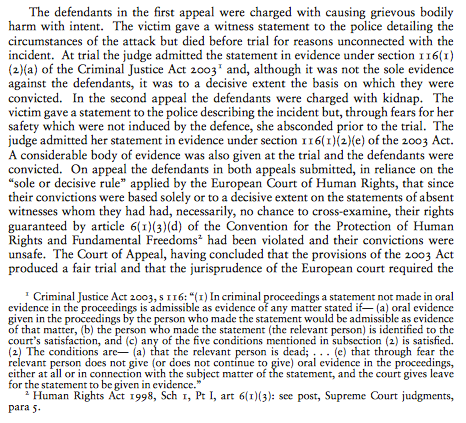
In some cases, this may consist of little more than a bald proposition, which in older reports used to be contained in a sidenote. In most modern reports, however, the headnote will take a bipartite form in which the first part will outline the relevant facts and issues, and the second, in a separate paragraph or paragraphs, continuing after the word “Held,” will set out the proposition(s) of law. This structure enables readers quickly and easily to ascertain what the case was about and identify the point of law decided.
In a few cases, a propositional headnote is more appropriate, particularly where the facts are largely irrelevant to any understanding of the principle, and would, if included, simply distract readers from the point of the case. Sometimes this will be followed by a brief statement of the court’s application of the principle to the facts.
Although the headnote adds value to the report of a judgment, it is the judgment itself which sets the precedent and binds subsequent decision-makers.
Nevertheless, a good headnote is a work of meticulous legal draftsmanship and can withstand the closest of textual scrutiny. Accuracy is all. Make the proposition too general, and the principle appears either so watered down as to be meaningless or, more dangerously, misleadingly wide in its application. Draw it too narrowly, and it fails to express the principle on which the court based its decision. At its best, a headnote is a precious distillation – the single malt of legal learning.
7. The blocklists: cases referred to or cited
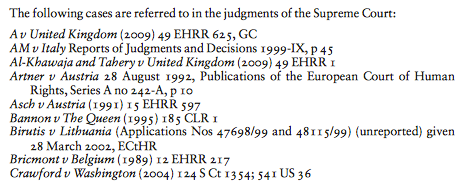
Where earlier cases have been judicially considered by the court in formulating a principle of law, this is noted in the headnote. Cases may have been followed or applied, or merely considered, or they may have been disapproved or overruled. In the case of a decision being appealed, they will have been affirmed or reversed by the higher court.
But not all cases mentioned in a judgment will have been subject to such particular treatment, and it is therefore useful to have a list of all the cases referred to, together with their main report references and, for judgments given in the 21st century, their neutral citations.
What distinguishes ICLR reports from those of almost all other publishers is the fact that they also list, separately, the additional cases cited in argument and, where appropriate, cases not cited in oral argument but referred to in counsel’s skeleton arguments (written summaries of submissions exchanged in advance of the hearing).
These lists of cases are referred to generically as “blocklists”. The reporting references given for cases, where more than one such reference is available, are arranged in order of their citation status, with the Law Reports reference being given first (since this must be cited in preference to any other version), followed by the Weekly Law Reports, specialist series published by the ICLR, and then various series, such as the All England Law Reports and Lloyd’s Law Reports, from other publishers. This is also the order in which such references are given in the Consolidated Index, which indexes all the reports published in these and in certain other widely used series.
8. The facts and procedural history
What is sometimes referred to as the “facts paragraph” is a brief introduction to the case, giving the full names of the parties and outlining the nature and history of the proceedings (action, application, appeal etc) between them from their commencement to the current hearing.

Additional information provided here may include a summary of the claims, or the grounds of appeal taken from the appellant’s notice, or the case stated by a lower court on an appeal by case stated.
In some older reports, the facts of the case are also summarised here, rather than being set out in full in the judgment from which they are taken, so that only that part of the judgment dealing with the law and its application to the facts is reproduced.
9. Appearances

The names of counsel (barristers) and/or solicitor advocates are given in order of seniority. In more recent reports, these are followed by the names of the solicitors who instructed them. (In older cases, the solicitors’ names are listed at the end of the report.)
The names are grouped according to the parties they represented, in the order in which they would have been heard in court, ie claimant first at first instance, appellant first on appeal.
10. Argument
Where a summary of counsel’s submissions is included in the report, this is set out after the name(s) of counsel who presented it. The summary is based on the oral submissions actually given in court during the hearing, which the reporter has attended in person, supplemented by the skeleton arguments.
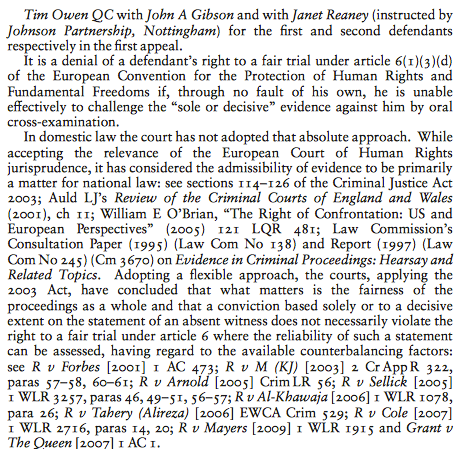
The note of argument can demonstrate exactly what points were put to the court, and which cases and materials were cited in support of those points. It is a feature which adds enormously to the value of the report to future readers. It can also help establish whether a particular point was before the court, for example where it is suggested that a particular decision was arrived at “per incuriam” (ie without reference to a critical authority).
This summary of argument is a feature unique to the Law Reports published by the ICLR (no other English series regularly includes it) and is only possible by virtue of the fact that the ICLR’s reporters routinely attend court during the hearing and arguing of cases, and not merely when judgment is given. Once the reporter has prepared a note of argument, a copy is sent to the counsel concerned for them to check and approve its accuracy.
11. Judgment(s)
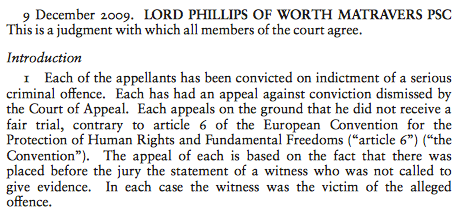
The largest and most important element of a full text law report is the judgment or judgments given in the case. The version used in the report is based on an authorized transcript, approved by the court as an accurate record. It is, however, then subject to a number of editing processes. First, the reporter checks all the references to, and quotations from, other cases, textbooks, statutes and other published materials in the judgment. The text of the judgment is brought into conformity with the ICLR’s “house style” with regard to dates, certain kinds of recognised abbreviations, modes of citation and so forth. Factual references such as dates, sums of money etc are checked for accuracy and consistency.
Once the reporter has handed in the report, it is subedited and edited in-house, and the references and quotations in the judgment are double-checked to ensure complete accuracy. When the report is complete, a proof copy, including the edited version of the judgment, is sent to the judge or judges for their approval. Although judges are welcome to comment on the headnote or other aspects of the report, the main purpose of sending them the proof is for them to approve the judgment. Any queries or anomalies can be brought to their attention at this stage and it is not uncommon for judges themselves to propose minor textual alterations at this stage.
As a result of these processes, the version of the judgment included in a full text law report published by ICLR is more authoritative and reliable than the transcript.
Where judgment has been reserved, rather than being given “ex tempore” at the conclusion of the oral hearing, it is preceded by the words “Cur adv vult” (curia advisari vult, Latin for “the court wishes to be advised”) or “The court took time for consideration”.
12. Orders

At the conclusion of the judgment, there is a brief statement of the orders afterwards given by the court. If there has been an application for leave to appeal, the decision whether or not to grant it will also be recorded.
13. Reporter
To ensure their accuracy and reliability, law reports must be written and edited by qualified lawyers, ie barristers or solicitors.
Where the name of the reporter is given in full, it will be accompanied by the word “barrister” or “solicitor”; but for the reporters of the ICLR who have been officially appointed to cover particular courts, and whose names and qualifications are listed in the front of the published volume, only their initials are given on the actual report.
